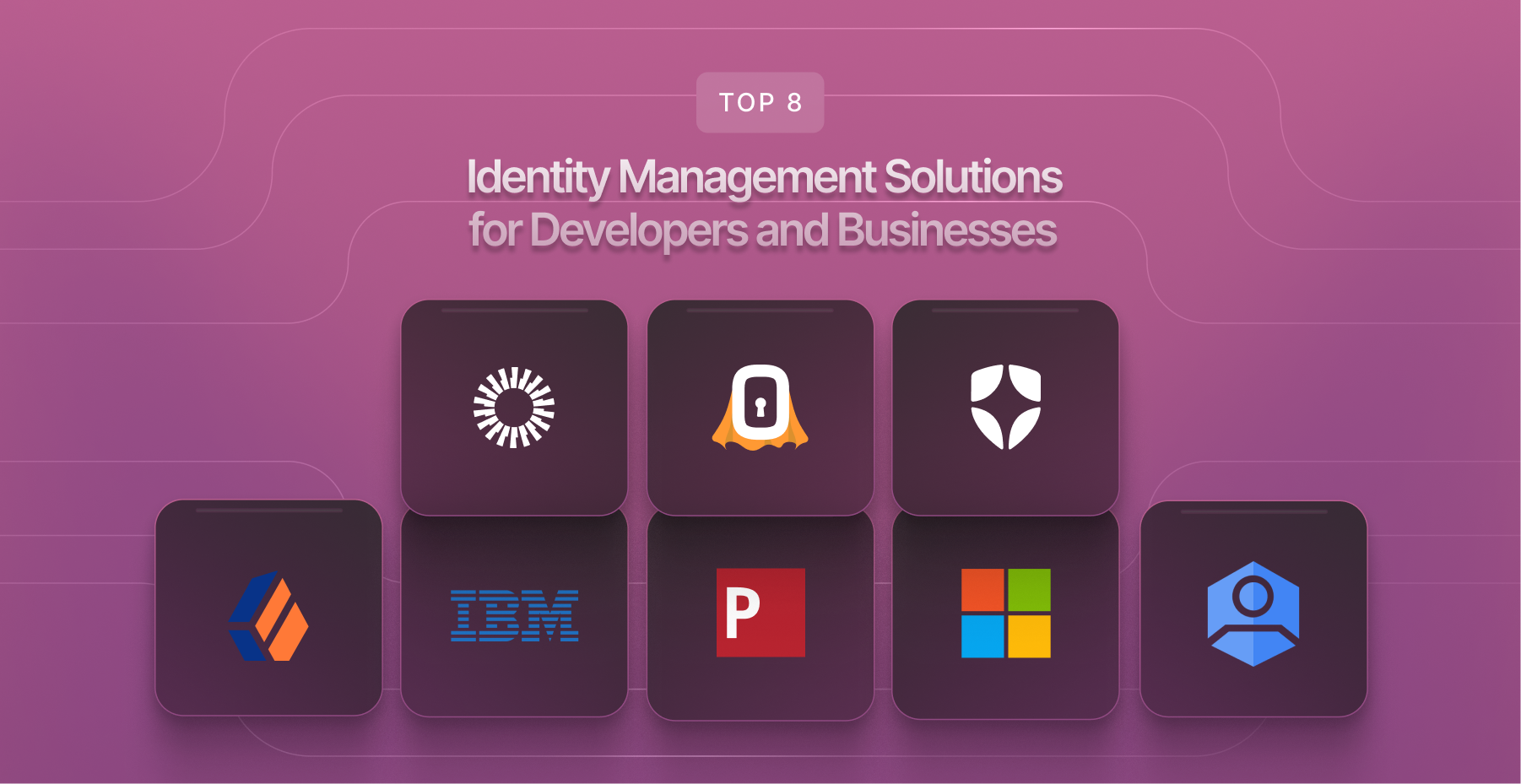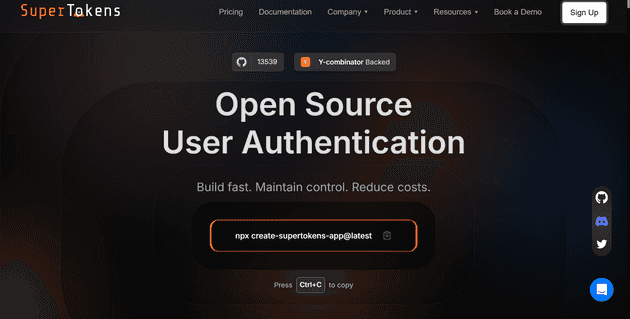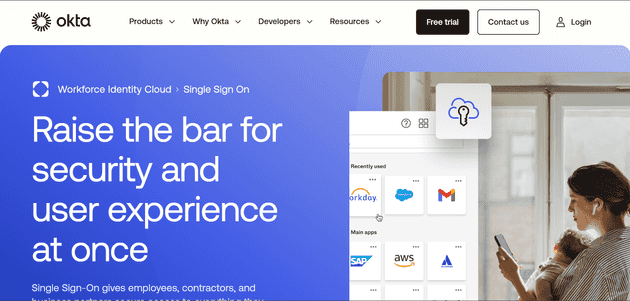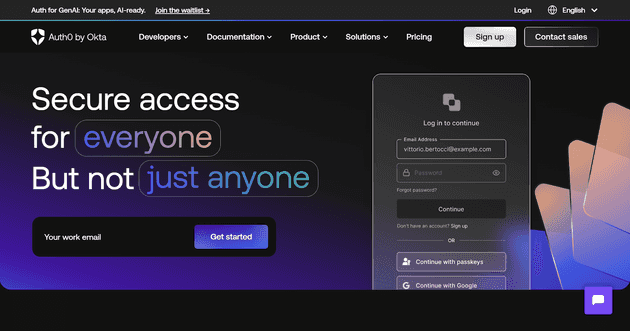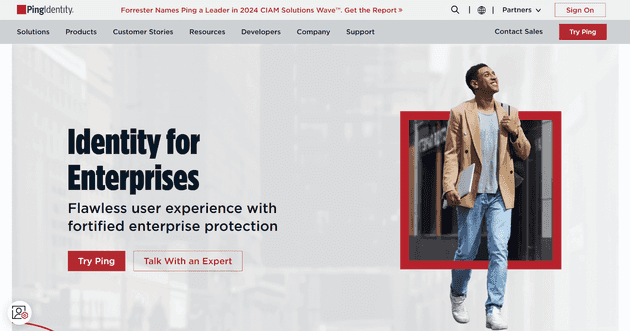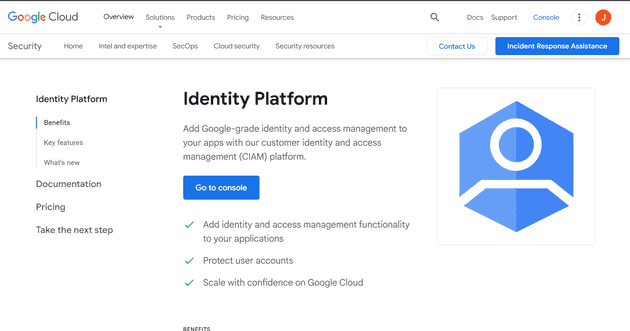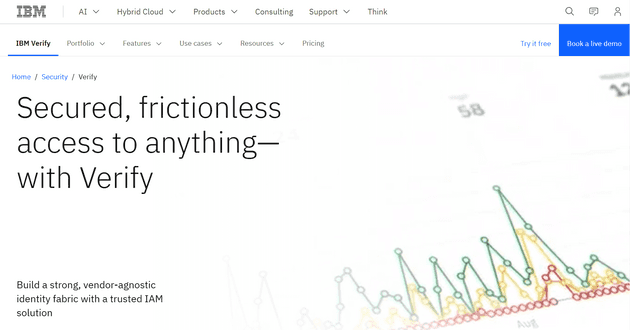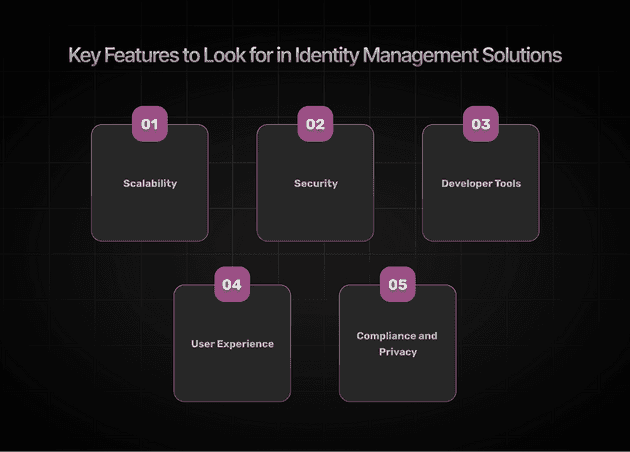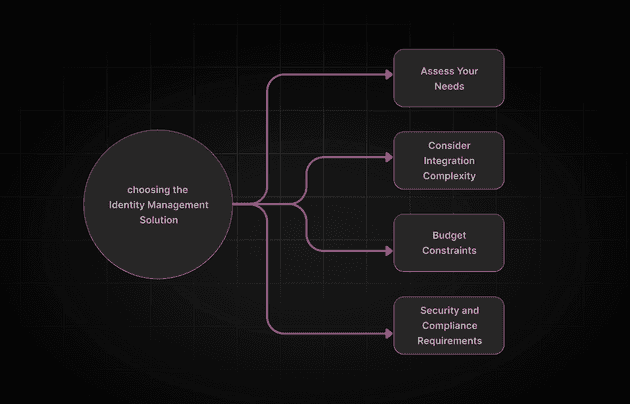Table of Contents
- Challenges Developers Face with Identity Management
- 1. SuperTokens: Open-Source and Developer-Friendly
- 2. Okta
- 3. Auth0
- 4. Ping Identity
- 5. Microsoft Azure Active Directory
- 6. Google Identity Platform
- 7. IBM Security Verify
- 8. ForgeRock
- Key Features to Look for in Identity Management Solutions
- Why SuperTokens Is Ideal for Developers
- How to Choose the Right Identity Management Solution
- Future Trends in Identity Management
- Conclusion
Managing identity has become essential for the success of modern applications. As businesses increasingly turn to digital platforms, the demand for effective identity management solutions has risen. This growing need is reflected in market projections, with the global Identity and Access Management (IAM) market expected to reach 43.1 billion U.S. dollars by 2029. These solutions play a crucial role in ensuring secure access to resources, protecting sensitive information, and improving the overall user experience.
However, developers often face various challenges when implementing these systems, especially regarding scalability, security, and usability. In this article, I will explore eight of the top identity management solutions available today, highlighting their features, benefits, and the scenarios in which they work best.
Challenges Developers Face with Identity Management
Before diving into the solutions themselves, it’s important to understand the common challenges developers encounter in identity management:
-
Scalability: As applications grow, they must handle increasing numbers of users and traffic spikes without compromising performance. A scalable identity management system ensures seamless authentication and authorization processes, preventing bottlenecks and maintaining security at scale. By efficiently managing resources, scalable IAM solutions support business growth, enhance user experience, and adapt to evolving security requirements.
-
Security: With cyber threats on the rise, ensuring robust security measures like multi-factor authentication (MFA) and secure session management is crucial. In fact, studies show that MFA can block over 99.9% of account compromise attacks.
-
User Experience: A seamless user experience is essential for retaining users. Complicated authentication processes can lead to frustration and abandonment. For instance, overly strict password requirements have been observed to cause up to an 18% abandonment rate during checkout processes.
By addressing these challenges, developers can create secure and user-friendly applications that meet the demands of today’s digital environment.
1. SuperTokens: Open-Source and Developer-Friendly
Overview
SuperTokens is a lightweight, open-source identity management solution tailored specifically for developers. It focuses on providing a developer-friendly experience while ensuring robust security features.
Key Features
-
Secure Session Management: Uses rotating tokens to improve session security and prevent unauthorized access.
-
Pre-built Support for MFA and SSO: Simplifies the implementation of multi-factor authentication and single sign-on capabilities.
-
Role-Based Access Control (RBAC): Gives detailed control over user permissions, ensuring access is based on roles.
-
Multi-Tenancy: Ideal for SaaS applications that require tenant-specific configurations.
-
Extensibility: Provides customizable authentication flows and integrations, allowing developers to tailor solutions to their needs.
-
Flexibility: Supports self-hosting and cloud deployment options, enabling seamless adaptation to different architectures.
Why It Stands Out
Transparent Pricing: SuperTokens provides free development licenses, making it an ideal choice for startups and small teams.
Quick Integration: Frontend and backend SDKs enable faster implementation, significantly reducing time-to-market.
2. Okta
Overview
Okta is an enterprise-grade identity management solution that provides comprehensive features to manage user identities securely.
Key Features
-
Single Sign-On (SSO): Enables users to access multiple applications using a single set of credentials, streamlining the login process and improving user experience across platforms.
-
Multi-Factor Authentication (MFA): Enhances security by requiring users to verify their identity through multiple methods, offering an additional layer of protection against unauthorized access.
-
Adaptive Access Control: Dynamically adjusts access permissions based on user behavior and contextual factors, ensuring that security measures align with real-time risks and usage patterns.
Best For
Okta is best suited for large organizations that manage complex access scenarios across various platforms.
Drawbacks
While Okta offers powerful features, its pricing can be prohibitive for smaller teams or startups looking for cost-effective solutions.
3. Auth0
Overview
Auth0 is a flexible identity-as-a-service platform that provides developers with extensive customization options.
Key Features
-
Social Logins: Simplifies the authentication process by allowing users to log in through popular social media platforms, enhancing user convenience and engagement.
-
Passwordless Authentication: Provides a secure and user-friendly login experience by enabling access without the need for traditional passwords, reducing friction for users.
-
API Security: Ensures the protection of APIs from unauthorized access with advanced authentication mechanisms, safeguarding sensitive data and system integrity.
Best For
Auth0 is ideal for developers who need extensive customization options to fit unique application requirements.
Drawbacks
One of the main drawbacks of Auth0 is its pricing model; costs can scale quickly with an increasing user base, which may not be sustainable for all businesses.
4. Ping Identity
Overview
Ping Identity delivers advanced identity management solutions designed specifically for hybrid IT environments.
Key Features
-
Identity Federation: Allows secure sharing of identities between different domains, ensuring seamless and secure access across platforms.
-
Single Sign-On (SSO): Simplifies the login experience by allowing users to access multiple applications with a single set of credentials.
-
Adaptive Authentication: Uses contextual information to assess risk and adjust authentication requirements accordingly.
Best For
This solution is best suited for enterprises with complex on-premise and cloud setups that require sophisticated identity management capabilities.
Drawbacks
Developers may encounter a steeper learning curve when working with Ping Identity due to its advanced features and capabilities.
5. Microsoft Azure Active Directory
Overview
Microsoft Azure Active Directory (Azure AD) is a comprehensive identity management solution integrated with Microsoft services.
Key Features
-
Conditional Access: Provides policies that allow or deny access based on specific conditions.
-
Single Sign-On (SSO): Facilitates seamless access to Microsoft 365 and other applications.
-
Integration with Microsoft 365: Works effortlessly with other Microsoft services, enhancing productivity.
Best For
Organizations already utilizing Microsoft’s ecosystem will find Azure AD particularly beneficial due to its seamless integration capabilities.
Drawbacks
While Azure AD offers robust features, it may have limited flexibility when it comes to non-Microsoft applications, which could pose challenges for diverse tech stacks.
6. Google Identity Platform
Overview
The Google Identity Platform provides an identity solution tailored specifically for Google services and APIs.
Key Features
-
OAuth 2.0 Support: Provides secure access to APIs by delegating permissions through token-based authentication.
-
OpenID Connect Support: Simplifies integration with web applications, enabling smooth user authentication and identity management.
-
Strong Integration with Google Ecosystem: Seamlessly works with Google services like Firebase and Google Cloud Platform for enhanced functionality and performance.
Best For
This platform is ideal for applications built around Google APIs or those heavily integrated into the Google ecosystem.
Drawbacks
However, it may not be as robust in meeting complex enterprise needs compared to other dedicated identity management solutions.
7. IBM Security Verify
Overview
IBM Security Verify offers AI-driven identity management tailored for large-scale enterprises facing complex security challenges.
Key Features
-
Passwordless Authentication: Enhances security by eliminating passwords from the authentication process.
-
Identity Analytics: Provides insights into user behavior and access patterns to improve security postures.
-
Compliance Support: Helps organizations meet regulatory requirements through built-in compliance features.
Best For
Enterprises needing advanced compliance measures and AI-driven security will find IBM Security Verify particularly useful.
Drawbacks
The high cost and complexity of implementation may deter smaller organizations from adopting this solution.
8. ForgeRock
Overview
ForgeRock provides comprehensive identity management solutions designed specifically for IoT devices and enterprise systems.
Key Features
-
Identity Governance: Ensures proper oversight of user identities and access rights.
-
Customer Identity Management: Focuses on managing customer identities securely across multiple channels.
-
Privacy Tools: Offers features that help organizations comply with privacy regulations like GDPR.
Best For
ForgeRock excels in environments requiring robust identity management across complex multi-device ecosystems.
Drawbacks
However, its high implementation costs and steep learning curve may make it less accessible for smaller businesses or those new to identity management solutions.
Key Features to Look for in Identity Management Solutions
When evaluating different identity management solutions, consider the following key features:
Scalability
Look for solutions that can handle growing user bases effectively without sacrificing performance during traffic spikes. Scalability ensures that your application can grow seamlessly alongside your business needs.
Security
Ensure the solution supports essential security features such as MFA, SSO, and robust session management. A strong security framework is vital in protecting sensitive data from unauthorized access or breaches.
Developer Tools
Pre-built SDKs and APIs are critical for seamless integration into existing systems. Solutions like SuperTokens provide these tools, allowing developers to focus on building rather than integrating complex authentication processes.
User Experience
A good identity management solution should offer easy-to-use interfaces that enhance the experience for both developers and end-users. A streamlined login process can significantly improve user retention rates.
Compliance and Privacy
Verify that the solution meets necessary regulatory standards such as GDPR or HIPAA. Compliance features are essential in industries where data protection regulations are stringent.
Why SuperTokens Is Ideal for Developers
SuperTokens stands out as an excellent choice for developers due to several compelling reasons:
Open-Source and Free for Development
Being open-source means that SuperTokens is cost-effective for startups and small teams looking to implement robust identity management without incurring high costs upfront. The availability of free development licenses allows teams to experiment without financial commitment.
Fast Integration
SuperTokens offers pre-built components designed specifically for frontend and backend integration. This feature significantly reduces time-to-market by allowing developers to implement authentication quickly without extensive setup processes.
Multi-Tenancy and Customization
SuperTokens supports multi-tenancy out-of-the-box, making it perfect for SaaS applications where different tenants have specific needs. Its customizable nature allows developers to tailor the solution according to their application’s requirements easily.
Strong Security Features
With built-in support for secure session management and token rotation, SuperTokens enhances application security against common threats like session hijacking or replay attacks. The focus on security ensures that users’ data remains protected throughout their interactions with your application.
How to Choose the Right Identity Management Solution
Choosing the right identity management solution involves careful consideration of various factors:
Assess Your Needs
Evaluate your user base size, scalability requirements, and application complexity before selecting a solution. Understanding your specific needs will help you narrow down your options effectively.
Consider Integration Complexity
Opt for solutions that offer pre-built SDKs or APIs to facilitate ease of integration into your existing systems. The more straightforward the integration process, the quicker you can deploy your application into production.
Budget Constraints
Compare costs between open-source tools like SuperTokens versus enterprise-grade solutions like Okta or IBM Security Verify. Understanding your budget constraints will help you make informed decisions without overspending on unnecessary features or services.
Security and Compliance Requirements
Ensure that any chosen solution meets necessary regulatory standards relevant to your industry or geographic location. A lack of compliance can lead to severe penalties or reputational damage if sensitive data is mishandled or compromised.
Future Trends in Identity Management
As technology continues to evolve, several trends are shaping the future of identity management:
-
Rise of Passwordless Authentication: More organizations are moving towards passwordless authentication methods such as biometrics or one-time codes sent via SMS/email. This shift aims to enhance security while improving user convenience by eliminating passwords.
-
Integration of AI in Security Measures: Artificial intelligence will increasingly play a role in adaptive security models that analyze user behavior patterns in real-time to identify potential threats before they escalate into breaches.
-
Growing Adoption of Decentralized Identity Management: Blockchain-based solutions are gaining traction as they offer enhanced privacy controls by allowing users greater ownership over their data while reducing reliance on centralized authorities managing identities online.
Conclusion
Choosing the right identity management solution is crucial in today’s digital landscape where security breaches can have devastating consequences. Each solution discussed offers unique strengths tailored towards different organizational needs---from lightweight open-source options like SuperTokens ideal for startups to comprehensive enterprise-grade offerings like Okta or IBM Security Verify designed for large-scale operations facing complex challenges.
SuperTokens emerges as a standout choice due to its developer-friendly approach combined with strong security features at an affordable price point---making it perfect for startups and established businesses looking to enhance their app’s security posture efficiently without breaking budget constraints.
If you’re ready to take your application’s security seriously while maintaining scalability as you grow---consider trying SuperTokens today! You can start using it free of charge, which empowers you to enhance both your app’s security measures while providing a seamless experience for users across all platforms!
